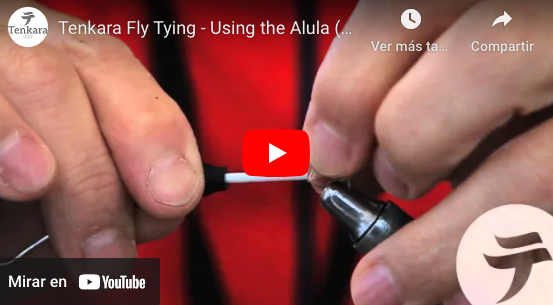Tenkara Flies on Wednesdays!
How does that sound? Every Wednesday, as you find yourself looking forward to the coming weekend and still with a couple of days to tie new flies before you head out, you'll now find a new tenkara fly tying video or post right here.
On our first week running the series, I'd like to show you a video I recorded over a year ago while visiting Japan. I have been meaning to share this video with you for a long time, and am very happy to finally get it done. This is a video of Mr. Takashi Yoshida, a well-known tenkara angler and fly tyer in Japan showing a unique tenkara fly using the alula feather of a pheasant, known in Japanese as the kenbane (you may visit his blog here, yoshidakebari.jugem.jp). The video is a nice follow up to yesterday's post by Jason about using contrasting colors on tenkara flies, as you'll notice Mr. Yoshida's effective use of contrast in his fly. I hope you'll enjoy it.
This video is 9:52 long, and is best watched at full resolution by clicking on the gear icon and selecting 720HD.
Not all tenkara flies are the same, and not all tenkara flies feature the characteristic reverse hackle (or sakasa style). Mr. Yoshikazu Fujioka breaks down the 8 main types of tenkara fly patterns in the chart featured in this post.
Anglers from different regions of Japan may have preferred different styles of flies based on the type of water they fished or how they fished their fly. And, of course, we can't ignore the fact that humans have a creativity that manifests itself in everything we do and can help solves problems such as "what do I do with this very stiff feather?"
Flies tied with the kenbane are going to have a stiff hackle. So, typically not a lot of motion will be given to the flies. On the other hand, they will retain their shape nicely as they are fished and the feather will certainly not brush back against the body of the fly, making it a great fly for very fast streams.
Mr. Yoshida used a hook size equivalent to approximately a size 12. Any hook will work fine. And, he used silk thread for the fly. Experiment with it and share your flies with us on the forum.
The alula, or kenbane, is also known as the "bastard wing" according to Wikipedia. It's a very small feather found on birds' wings. In the pheasant it looks like a little spade and is pretty hard. Birds do not have many of these feathers, and they are stiff and difficult to use, so it's not likely you'll see this fly tied commercially anytime soon.
Even though tenkara flies are typically very simple, and we like to focus on the most commonly used tenkara flies, there is a lot to talk about when it comes to tenkara flies. As they say in Japan, "tenkara has ten colors", meaning that every tenkara angler will have their own preference for how to fish and what flies and tackle to use. There is a multitude of fly patterns to be shared. So, tune in again next week for more tenkara flies.
